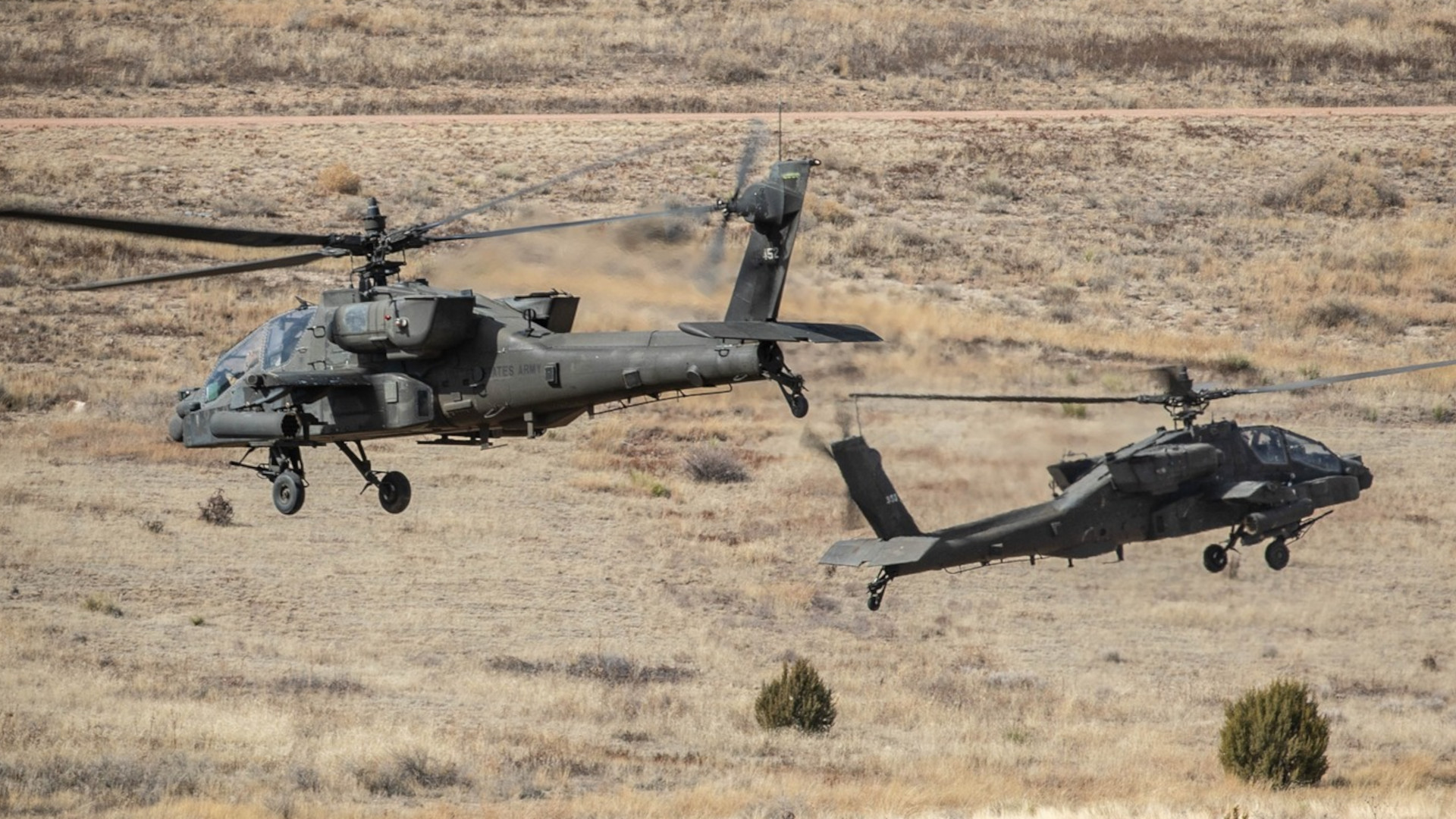South Korean military is reassessing its plans to acquire an additional 36 AH-64E Apache attack helicopters from the United States, fueled by increasing concerns about the vulnerability of helicopters in modern warfare, particularly highlighted by the ongoing conflict in Ukraine, according to the local daily Chosun, citing a military source.
In late August 2024, the US State Department granted preliminary approval for a Foreign Military Sale of the helicopters, valued at approximately 4.7 trillion won (around $3.5 billion).
This deal, involving Boeing AH-64E Apache helicopters, aims to bolster South Korea’s military capabilities as tensions in the region continue to rise.
However, the report said that the South Korean Ministry of National Defense, the Republic of Korea Army (ROKA), and the Defense Acquisition Program Administration have started a comprehensive review of the Apache acquisition plan.
The review will consider the possibility of reducing the number of units to be purchased. “There is already a sentiment within the Army that it may not acquire all 36 units due to these concerns,” one source noted.
The source even hinted that the entire purchase could be scrapped based on the outcome of the ongoing review.
The reconsideration of the Apache deal comes on the heels of developments in the Ukraine war, where attack helicopters have been targeted and downed by drones and portable missiles.

This has ignited a broader debate regarding the potential obsolescence of traditional attack helicopters in modern warfare. Currently, the ROKA operates 36 AH-64E Apaches, which were ordered in 2013 and delivered between 2016 and 2017.
The Army is also phasing out its older Bell AH-1S Cobra helicopters, which have been in service since 1976. The lessons observed during the Ukraine conflict have prompted military analysts to question the wisdom of allocating a significant amount of ROKA’s defense budget to Apache helicopters.
Moreover, the rising cost of the Apache helicopters is also influencing this strategic review. Initially, each unit was priced at 44.1 billion won; however, costs for the second batch have soared to 73.3 billion won, with further price increases anticipated, according to the report.
Troubles Mount For Boeing’s AH-64 Apache
In recent months, Boeing’s AH-64 Apache heavy attack helicopter has come under scrutiny, not only for its vulnerability in modern warfare but also due to a troubling series of incidents that have somewhat marred its reputation.
The first incident this year occurred on February 13, when an AH-64D from Utah’s 1st Battalion, 211th Aviation Regiment, crashed at South Valley Regional Airport in West Jordan.
One of the individuals onboard was treated and released, while a pilot from the US Air Force Reserve’s 419th Fighter Wing, stationed at Hill Air Force Base, was hospitalized but later reported to be in stable condition following the crash.
Just ten days later, tragedy struck again with another AH-64D mishap involving the Mississippi Army National Guard. This crash took place near Booneville, resulting in the deaths of Chief Warrant Officer 4 Bryan Andrew and Chief Warrant Officer Derek Joshua Abbott.
In response to the increasing frequency of such incidents, the Army National Guard grounded all of its Apache helicopters on February 27. Yet, the incidents did not stop there.

On March 25, an Apache helicopter crashed at Joint Base Lewis-McChord in Washington, followed by another crash on March 27 at Fort Carson, Colorado. These events raised serious concerns about the operational safety of the Apache fleet and led to heightened scrutiny from military officials and the public alike.
Adding to the Apache’s woes, last year, the Army reported a significant increase in electrical power generator failures on AH-64s, which can lead to “potentially hazardous” smoke buildup in the cockpit.
As of September 2023, the Army stated that a long-term solution was under investigation, with interim actions already implemented to modify generators so that they shut down automatically upon experiencing faults.
In a separate incident, on April 3, an Indian Air Force (IAF) Apache helicopter made headlines when it had to perform an emergency landing during a routine sortie in Ladakh, at approximately 12,000 feet near the Khardungla Pass.
After months of rigorous efforts, the IAF successfully retrieved the downed helicopter from the challenging high-altitude terrain in September 2024.
As these incidents unfold, questions loom over the future of the AH-64 Apache helicopter. While it has long been a staple of modern military operations, the recent series of accidents, along with worries about its vulnerability to contemporary threats, may lead military planners to reconsider how to adapt attack helos to meet future challenges.
- Contact the author at ashishmichel(at)gmail.com
- Follow EurAsian Times on Google News




